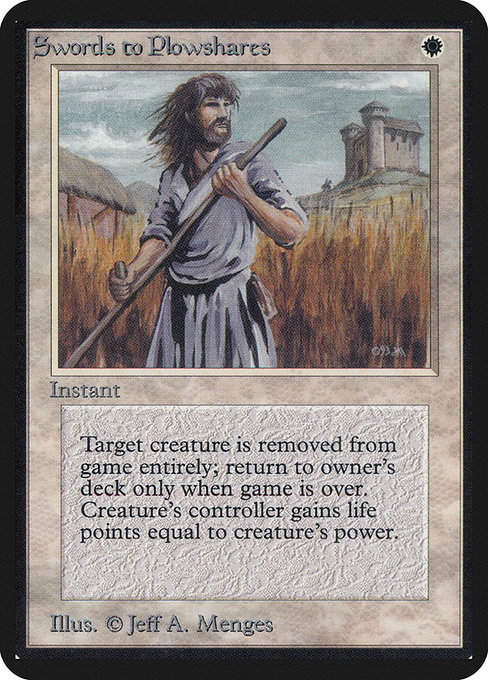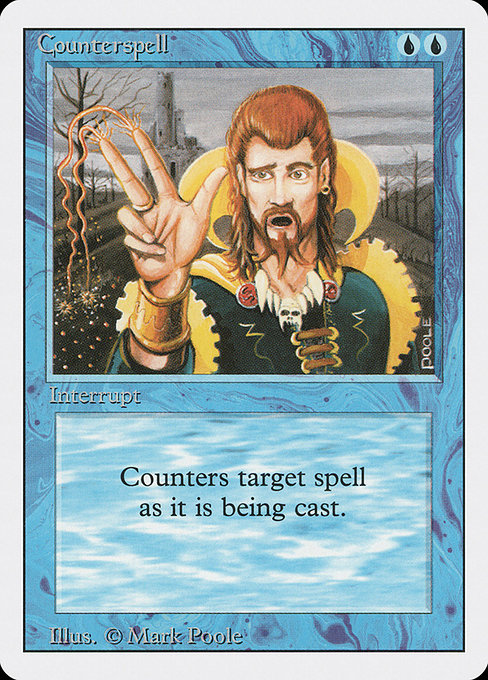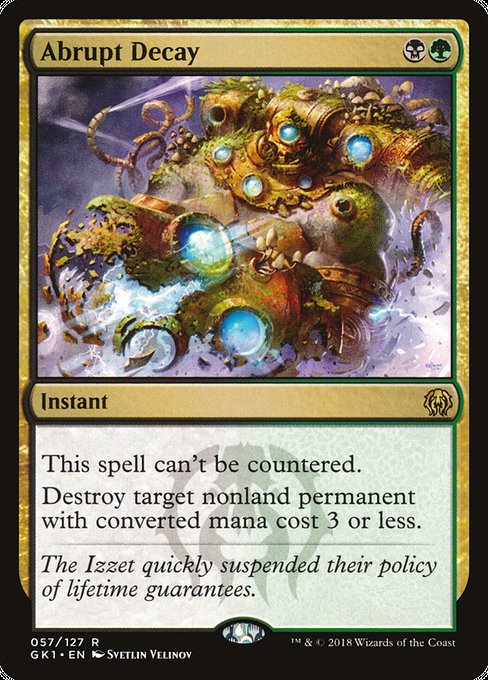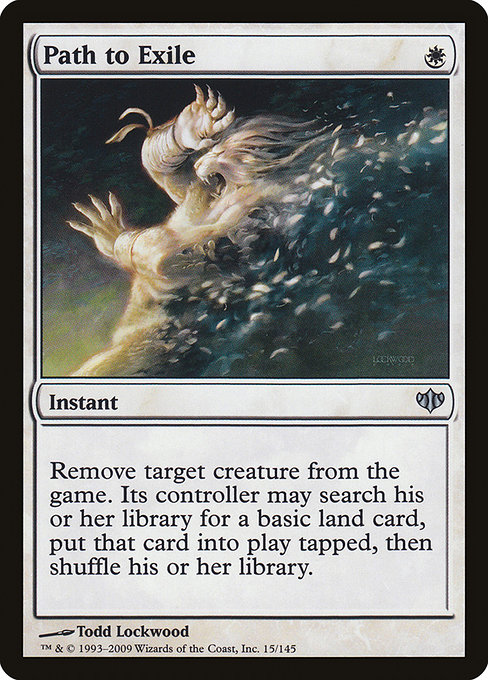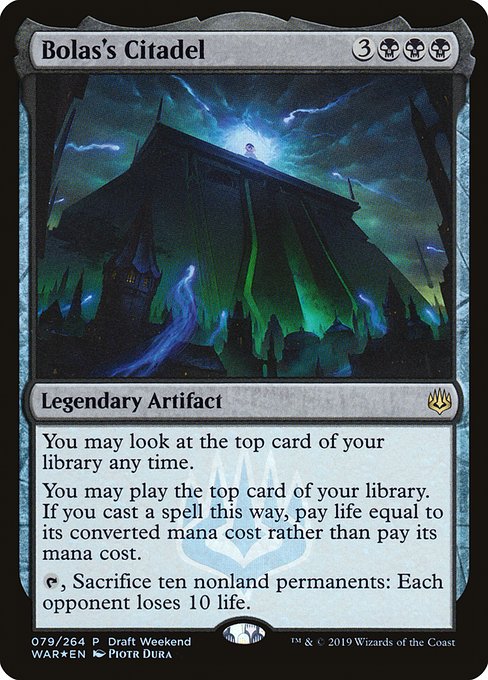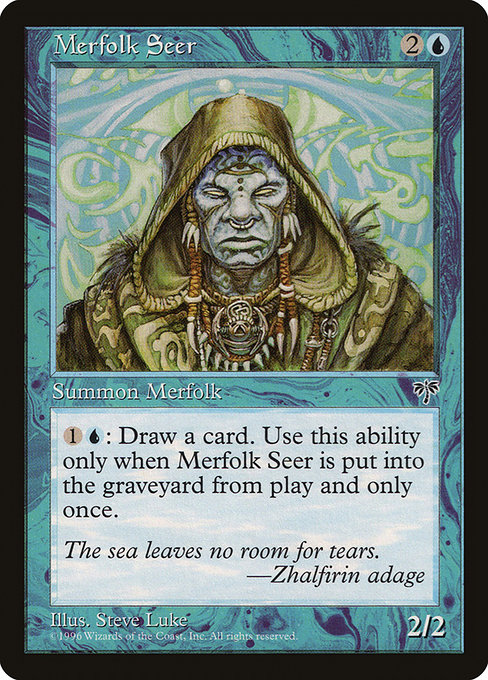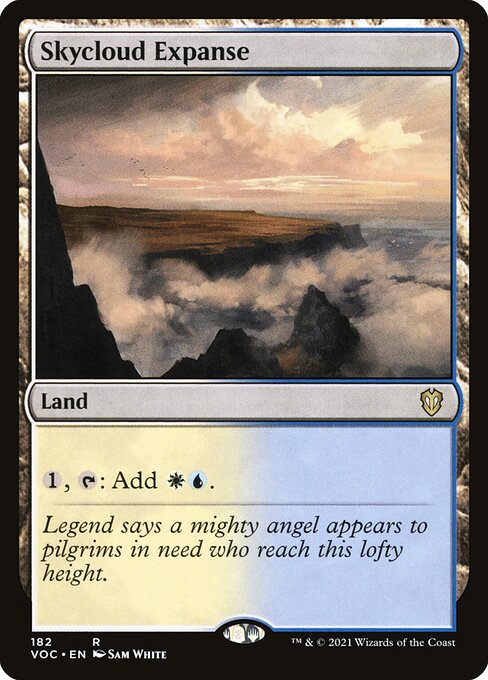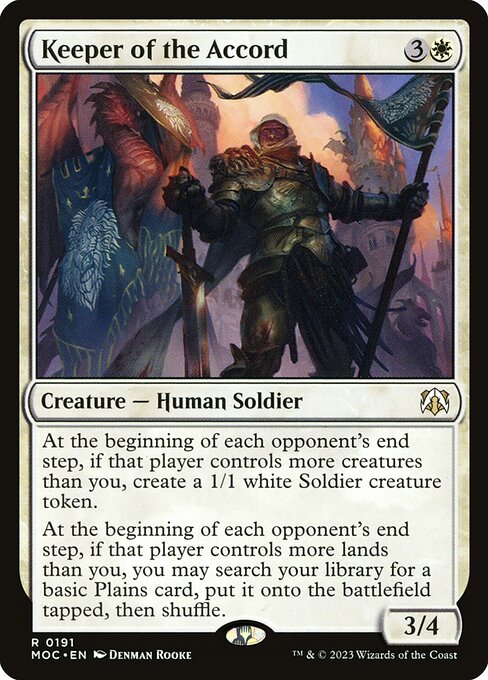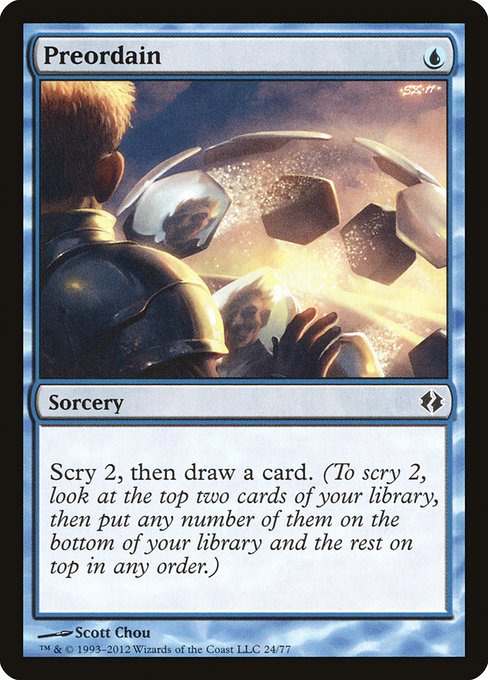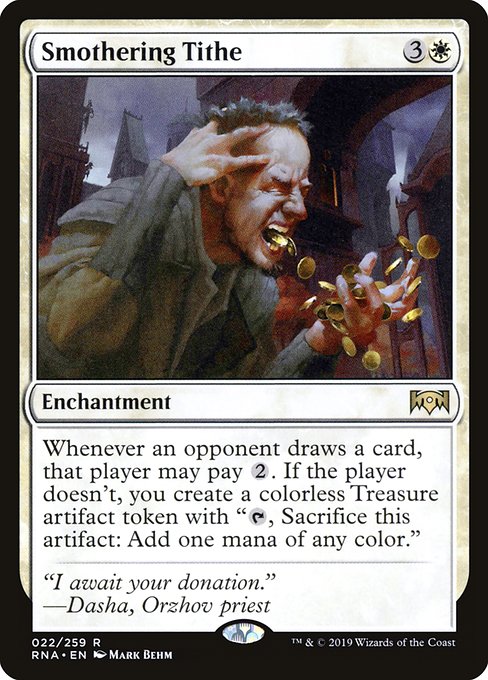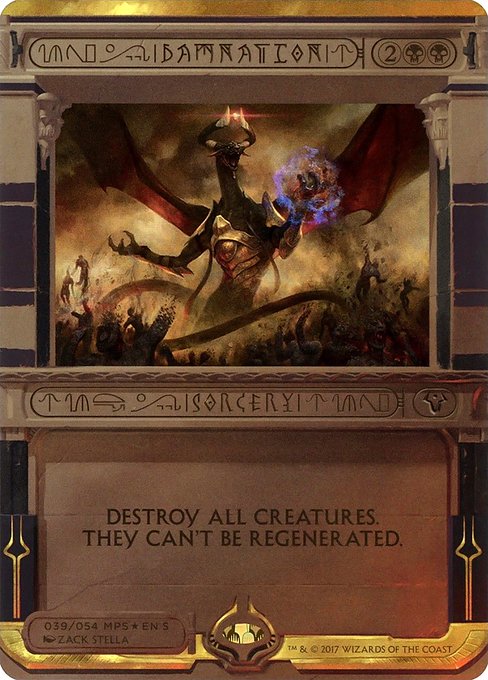
Damnation Full Guide

Guide Sections
Cards Mentioned in This Review
These cards are referenced in the strategy guide belowStrategy Guide
Last updated 2025-06-28TL;DR Summary
Damnation
This iconic sorcery is a game-wrecker, capable of clearing the board of any creatures. Its powerful effect makes it a staple in many decks, particularly those focused on controlling the opponent's life total or generating card advantage. With its high cost and rarity, Damnation is often considered a "bomb" card that can swing games in favor of its player.
Power Level: 9/10 (extremely impactful)
Main Use Cases:
- Sweeping creatures from the board to gain an advantage
- Combining with other removal spells or cards that benefit from a creature-less board state (e.g. Eternity Surge, Necrotic Ooze)
- Creating a "creature-less" gameplan, where you focus on generating card advantage and attacking directly
Popular Formats: Damnation is often played in Commander, particularly in decks focused on controlling life total or generating value from creatures being destroyed (e.g. Rakdos). Its power level makes it less suitable for casual playgroups, but it remains a powerful and sought-after card among experienced players.
Card Mechanics & Interactions
Damnation
Damnation is a powerful sorcery that destroys all creatures on the battlefield, rendering regeneration impossible. To understand its effects, let's break down its rules and interactions.
Stack Interaction: When Damnation resolves, it's a triggered ability that checks for targets as soon as it enters the stack. The ability "Destroy all creatures" is an instantaneous effect, so it resolves at the beginning of the next phase (not the beginning of the end phase, where most abilities resolve). This timing means that any creature destroyed by Damnation won't be affected by the end-of-turn cleanup or regenerative effects.
Battlefield Interaction: Once all creatures are destroyed, they're removed from the battlefield and can't be regenerated. Regeneration is a static ability (typically found on creatures) that allows the controller to regenerate the life points of a creature equal to its toughness during the beginning of their upkeep. If a creature has regeneration, it will still trigger when its life points reach zero, but since Damnation's effect is "They can't be regenerated," this won't happen.
Interaction with Other Cards: Some cards interact with creatures or regeneration in interesting ways:
- Sacrifice abilities, like those found on Liliana of the Veil and Bolas's Citadel, may still trigger when a creature is destroyed by Damnation. These effects will resolve during the upkeep phase.
- Regeneration-enabled creatures, such as Goblin Matron, can be targeted by Damnation, but their regeneration ability won't trigger since they're already removed from the battlefield.
Edge Cases and Unusual Interactions: Keep in mind that some cards may have subtle interactions with Damnation's effect:
- Vampiric Tutor, which allows a player to return a creature card from their graveyard to their hand, won't allow them to play it again if it was destroyed by Damnation.
- Estrid's Invocation can potentially generate mana for the colorless cost of Karn, the Great Creator, allowing its controller to cast another spell during the same turn. However, this assumes they have the necessary mana available.
Commander-Specific Quirks: As a special rarity card, Damnation may be included in specific Commander decks due to its powerful effects. Commanders with life gain or creatures that regenerate can create interesting interactions with Damnation's ability. Players should carefully consider their deck's overall strategy when including this sorcery.
In summary, Damnation is an efficient means of removing creatures from the battlefield and preventing regeneration. Its instantaneity and timing mean it interacts with other abilities in unique ways, making it a valuable tool for players who can capitalize on its effects.
Strategic Applications
Damnation: A Powerful Tool for Control Decks
In many control decks, Damnation is a staple card used to clear the board and gain a significant advantage. Its ability to destroy all creatures on the battlefield is particularly devastating when paired with other removal spells or counterspells.
- One example of a deck that benefits from Damnation is the popular "Midrange" archetype, which emphasizes playing efficient creatures while controlling the board with removal spells. Cards like Swords to Plowshares and Path to Exile provide additional support for this strategy.
- Another example is the "Control" archetype, which relies on cards that can disrupt opponents' plans and maintain a strong board presence. In this case, Damnation serves as an ultimate finisher, clearing the way for a devastating attack or a decisive victory.
In terms of specific color combinations, Damnation is most commonly found in monoblue decks, where it can be paired with efficient creatures like Dark Confidant and Snapcaster Mage. However, it also sees play in multicolor decks that emphasize control and removal.
Here are some examples of cards that pair well with Damnation:
- Removal spells: Cards like Swords to Plowshares, Path to Exile, and Doom Blade help clear the board and create an opportunity for Damnation to shine.
- Counterspells: Spells like Counterspell, Cryptic Command], and [[Supreme Verdict can disrupt opponents' plans and make it easier to cast Damnation.
- Efficient creatures: Cards like Dark Confidant, Snapcaster Mage, and Jace, the Mind Sculptor provide a strong foundation for a blue deck and can be used in conjunction with Damnation.
In competitive play, Damnation is often considered an "insurance policy" – a powerful tool that can be played at the right moment to seal the game. In casual games, it provides a fun and dramatic way to finish off opponents.
Advanced Techniques
Damnation's Synergies and Tricks
In a deck focused on black removal, Damnation can be a game-ending spell when combined with cards like Sylvan Caryatid or Necrotic Ooze, which sacrifice themselves to trigger an ability. With these creatures in play, the opponent will have to pay two life for every creature destroyed by Damnation.
Another synergy arises when pairing Damnation with a lifegain creature like Griselbrand or Tibalt, Rakish Imposeur. This creates a situation where the opponent can't gain life from their creatures, while you're still profiting from lifegain effects.
When playing against an opponent with a massive creature like Atraxa, Praetors' Voice, Damnation becomes a cheap and efficient way to remove it from the board.
To maximize the impact of Damnation, consider pairing it with Vraska's Contempt or Abrupt Decay, which can be used to clear the board of smaller creatures before casting Damnation. This allows you to focus on larger threats and protect yourself from potential counterattacks.
In some cases, using Damnation as a " combo piece" in conjunction with other cards like Sword of the Animist or Vraska's Bane can result in an extremely powerful board state, as your opponent will struggle to recover from the loss of their entire army.
Common Mistakes
Mistakes to Avoid with Damnation
In Commander, Damnation is a potent sweepers that can completely disrupt the board. However, players often make critical mistakes when casting it.
- Timing issues: One common mistake is playing Damnation too early in the game, allowing opponents to develop their boards before you can destroy their creatures. Instead, consider holding back until after the opponent has committed to a board presence or during a crucial phase of the game.
- Underestimating its impact: Players sometimes underestimate the sheer power of destroying all creatures on the board. This oversight can lead to neglecting card advantage and allowing opponents to rebuild or recover more easily. Consider pairing Damnation with cards like Swords to Plowshares or Path to Exile to maintain a strong board presence.
- Neglecting regeneration prevention: The Oracle text specifically states that destroyed creatures "can't be regenerated." This detail is often overlooked, leading players to assume their opponents can simply use regenerating spells to revive their creatures. Be aware of this aspect and consider playing cards like Chandra, Torch of Defiance or Karn Liberated to disrupt regeneration strategies.
- Poor synergies: Players sometimes pair Damnation with cards that don't complement its effects well, such as tokens generators without a way to destroy them or creatures with abilities that don't interact meaningfully with the sweeper. Optimize your deck by pairing Damnation with cards like Liliana of the Veil or Sarkhan the Premodern that synergize with its effects.
By being mindful of these common mistakes, you can maximize the impact of Damnation in your Commander deck and stay ahead of your opponents.
Conclusion
Damnation is a special rarity card from the Mirrodin Prerelease Promos set (mp2). It's a high-impact sorcery that can wipe out an entire board of creatures. With its straightforward effect, "Destroy all creatures. They can't be regenerated," Damnation is a potent tool for those who wield its dark might.
In terms of price, the foil version costs about $126.15 USD, while there's no listed non-foil price due to limited availability or reprints in the past. Considering these prices, Damnation is not a budget-friendly option for Commander decks or any other Magic format.
If you're looking for similar effects at a lower cost, consider alternatives like Massacre, Crush from Existence, or Phantasmal Fireball. These cards can provide creature destruction or damage, but their effects may differ from the straightforward destruction of Damnation.
Overall, Damnation is a powerful card that has cemented its place in Magic's metagame over the years. Its rarity and prices reflect its potency, making it an attractive inclusion in specific archetypes like Jeskai and Golgari Aggro.
Deckbuilding & Synergies
Damnation is a powerful sorcery that destroys all creatures on the battlefield, preventing them from being regenerated. To build around this card effectively, you'll want to focus on a monoblack or black-heavy commander deck.
Commanders:
- Liliana of the Veil: This legendary creature's ability to draw cards and create tokens when opponents sacrifice creatures makes her an excellent partner for Damnation.
- Emrakul, the Aeons Torn: Emrakul's own destruction capabilities and ability to reanimate destroyed creatures make it easy to recover from the damage caused by Damnation.
Synergy Cards:
- Wrath of God: This instant can be used in conjunction with Damnation to clear out large numbers of permanents, making it a great addition to any black deck.
- Sylvan Caryatid: This creature's ability to tap down to generate card advantage makes it an excellent target for Damnation's destruction effect.
Color Combinations:
- Monoblack: This is the most straightforward way to build around Damnation, as you'll have access to a wide range of black creatures and removal spells.
- Azorius (WB): Adding white to your deck allows you to play more control-oriented creatures and removal spells, making it easier to survive against opponents who try to recover from Damnation.
Combo Notes:
- Damnation + Wrath of God: Use these two cards together to clear out the board quickly and set up for a powerful gameplan.
- Damnation + Emrakul's Reanimation: Sacrifice creatures with Emrakul's reanimation ability in mind, allowing you to recover from the destruction caused by Damnation.
When building around Damnation, it's essential to focus on creating a robust removal suite and playing to the strengths of your chosen commander. By combining these cards with synergistic plays like Wrath of God and Sylvan Caryatid, you'll be well-equipped to take advantage of this potent sorcery.
Format Roles
Damnation in Commander
In the ever-changing landscape of Commander, Damnation remains a formidable and versatile removal spell. Its impact is most pronounced when paired with other cards that synergize with its effects.
Key Benefits:
- Wide-ranging destruction: With an ability to destroy all creatures, Damnation effortlessly clears the board, allowing for aggressive strategies or setting up for more complex interactions.
- Recurring threat reduction: By preventing creature regeneration, it neutralizes recurring threats like Golgari Findbroker and Karametra's Acolyte, forcing opponents to find alternative ways to attack.
However, its power is mitigated by the following factors:
- Resource-intensive: With a mana cost of {2}{B}{B}, Damnation demands significant investment in black mana, making it less accessible for some decks.
- Interactions with other spells: Cards like Doom Blade and Sword of War and Peace can interact negatively with Damnation's destruction ability.
Casual Format
In casual play, Damnation is often seen as a powerful addition to aggressive black decks. Its wide-ranging destruction proves particularly effective against opponents who rely on large creature armies.
Competitive Formats
Although not a staple in top-tier Commander lists, Damnation sees some play in the more aggressive and combo-oriented metagames. Its versatility allows it to contribute to various strategies:
- Sacrifice synergies: Paired with Wrenn and Six, it enables powerful sacrifice combinations.
- Combo decks: Used as a means of clearing threats for combo-heavy lists, such as those featuring The Ur-Dragon.
Banned Status
Damnation has not been banned in any official Commander formats. However, some specific archetypes or strategies may be disallowed due to its ability to severely impact gameplay.
Overlooked Aspects
In certain circumstances, Damnation's effects can create opportunities for opponents to take advantage of:
- Creatures with abilities: Cards like Boros Guildgate and Agrus Kos, the Cursed Huntmaster have abilities that interact negatively with Damnation's destruction.
- Life gain synergies: Opponents leveraging life-gain abilities or effects may find themselves at an advantage after a Damnation is played.
Key Scenarios
Key Scenarios & Matchups
In the right situations, Damnation can be a game-changer, while in others it falls flat. Consider the following scenarios:
Aggro Decks with Little Removal
Damnation excels against aggressive decks that rely heavily on creatures for early pressure. If your opponents are relying on Goblin Guide, Monstrous Carabid, or other fast and efficient creatures to attack you, playing Damnation can be a devastating blow. With no regeneration allowed, these creatures will stay dead, giving you breathing room to develop your game.
Combo Decks
In the early game, combo decks often rely on complex interactions between cards. If you have an Ad Nauseam or Liliana of the Veil in play, casting Damnation can prevent opponents from resolving their combo pieces. This is especially effective if they're relying on Ancestral Recall to accelerate their mana.
Board Presence
If your board is filled with 2-toughness creatures like Burning Hands's victims or low-toughness tokens from Spectral Procession, Damnation can clear the way for more substantial threats. Be cautious, however, as this might not be enough to overcome an opponent's established board presence.
Interplay with Other Cards
- Tolarian Academy: With Tolarian Academy's ability to generate card advantage, playing Damnation at the right time can help you control the game.
- Rune-Scarred Monk: If Rune-Scarred Monk is on the board, casting Damnation won't necessarily make it easier for opponents to kill your creatures, but it might still disrupt their plans.
- Frostburn Weird: In combination with Frostburn Weird's ability, playing Damnation can lead to a swift game end if you have Karakas or other ways to protect yourself.
Matchups Where Damnation Struggles
In the following situations, Damnation might not be as effective:
- Control Decks with Strong Removal: If your opponents have access to removal spells like Abrupt Decay, Oblivion Ring, or [Doom Blade,] playing Damnation may not significantly impact their board presence.
- Trickier Combo Decks: Some combo decks, such as those using Thalia, Guardian of Thraben with Liliana's Caress, can find ways to deal with your creatures while still resolving their combo pieces.
By understanding these scenarios and matchups, you can better assess when Damnation is a viable play and make informed decisions in game situations.
History & Meta
Damnation has been a staple in the Magic: The Gathering metagame for years, particularly among black deck archetypes. As a special rarity card from the Mirrodin Prerelease Promos set (mp2), it's not surprising that this card has seen various printings and reprints over the years.
One notable printing of Damnation is in the 2014-2015 block, specifically in the Magic 2015 Core Set. This reprint made the card more accessible to a wider audience, allowing players to experiment with its devastating effects on creature-heavy decks.
In terms of tournament presence, Damnation has seen play in various formats, including Standard and Legacy. Its ability to wipe out an entire board makes it an attractive inclusion in aggressive black strategies that rely on quickly removing creatures from the game.
According to EDHREC's popularity metrics, Damnation holds a modest rank of 310 among 12,000+ cards. While not a staple in every deck, its presence is evident in specific archetypes like Jeskai and Golgari Aggro. In iconic decks like the infamous "Dark Animus" combo from the early 2000s, Damnation plays a crucial role in clearing a board of pesky creatures before unleashing its devastating combo.
As for prices, Damnation's foil version can be quite pricey, with an average US price of $126.15. The non-foil versions, however, are relatively affordable, making it accessible to players looking to incorporate the card into their decklists.
In summary, Damnation is a high-impact sorcery that has cemented its place in Magic's metagame over the years. Its inclusion in various printings and reprints has made it more accessible to players, while its tournament presence demonstrates its viability across different formats.
Flavor & Lore
In the shadowy realm of Tarkir, where the sun dips into the horizon and paints the sky with hues of crimson and gold, the power of damnation is a double-edged sword. This sorcery, known as Damnation, is a potent tool for those who wield its dark might.
With a mere whisper of incantation, the cards' oracle text comes to life: "Destroy all creatures. They can't be regenerated." The very fabric of battle is torn asunder, leaving nothing but a desolate landscape devoid of life. This is no trivial matter, for the creatures that roam the planes are not just simple beasts; they are sentient beings with their own agendas and motivations.
In the midst of this chaos, players who control Damnation must carefully consider its use, lest they invite catastrophe upon themselves. A careless cast can upset the delicate balance of power on the battlefield, allowing opponents to capitalize on the sudden shift in fortunes.
The rarity of Damnation is a testament to its potency, for it is not something to be taken lightly. Its price on the black market reflects this: 126.15 USD in foil, a sum that only the most desperate or the most cunning would pay. Those who wield this card must do so with caution and a keen understanding of the consequences.
In the world of Magic, there are few cards as feared as Damnation. Its presence on the battlefield is a harbinger of doom for those creatures that dare to stand in its way. It is a reminder that even the strongest among us can fall victim to the whims of fate, and that power must always be tempered with wisdom.
Those who have faced Damnation know well the terror it inspires: the sound of creatures screaming as they are torn from existence, their essence banished to the void. The memory of this experience lingers long after the battle is won or lost, a testament to the card's enduring impact on those who dare to wield its power.
In Tarkir, Damnation is a name whispered in awe and trepidation. Its legacy is one of destruction and rebirth, a cruel reminder that even the most powerful among us can fall victim to the whims of fate. Those who control this card must do so with caution, lest they invite catastrophe upon themselves.
Budget/Alternatives
Budget-Friendliness and Reprint Status
Damnation is a special-edition card from the Mirrodin Prerelease Promos set (mp2). Its rarity is listed as "special," which means it's not included in regular booster packs or draft decks. This already makes it less accessible to budget-conscious players.
Looking at its prices, Damnation has an USD foil price of $126.15 and a Tix price of 0.17. The lack of a USD non-foil price indicates that there might be limited availability or reprints in the past.
Comparing Prices
To put these numbers into perspective:
- A single Tix is roughly equivalent to $0.25.
- The foil version costs about 500 times more than its non-foil counterpart (in terms of Tix).
Considering these prices, Damnation is not a budget-friendly option for Commander decks or any other Magic format.
Commander and Budget-Friendly Alternatives
For a similar effect in Commander, you can consider the following cards:
- Massacre: A relatively affordable creature destruction spell with an EDHREC price of around 1.50 Tix.
- Crush from Existence: Another powerful destruction spell that costs about 2.50 Tix and has seen multiple reprints.
- Phantasmal Fireball: While not directly equivalent, this card deals significant damage to creatures and can be used in various deck archetypes for around 4-5 Tix.
Keep in mind that prices may fluctuate over time due to reprints, set availability, or changing market conditions. These alternatives are more budget-friendly, but their effects might differ from Damnation's straightforward creature destruction.
